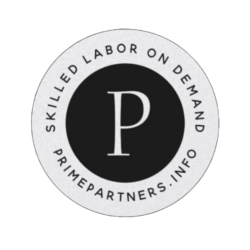Commercial Electrical Foreman Interview Questions and Answers
Overview of Required and Recommended Certifications, Educational Background, and Industry Qualifications
To excel as a Commercial Electrical Foreman, candidates should possess a combination of formal education, certifications, and on-the-job experience. This section outlines the foundational and advanced qualifications that can enhance a candidate’s profile.
Required Certifications and Qualifications
-
Electrician Journeyman License
- Description: A fundamental requirement for any foreman; this license certifies a candidate’s ability to perform electrical work independently.
- How to Obtain: Requires passing a state exam and completing a certain number of hours as an apprentice.
-
First Aid/CPR Certification
- Description: Ensures the foreman can handle emergencies on the job site.
- How to Obtain: Available through organizations like the Red Cross.
Recommended Certifications and Qualifications
-
Master Electrician Certification
- Description: Demonstrates a higher level of expertise and ability to handle complex electrical systems.
- How to Obtain: Requires additional experience and passing a comprehensive exam.
-
OSHA Safety Certification
- Description: Shows a commitment to safety practices and regulations.
- How to Obtain: Training programs are available through various safety organizations.
-
Project Management Professional (PMP) Certification
- Description: While not specific to electricians, this certification is valuable for managing projects and teams.
- How to Obtain: Requires project management experience and passing a rigorous exam.
-
Associate’s or Bachelor’s Degree in Electrical Engineering or a Related Field
- Description: Provides a solid educational foundation and understanding of complex electrical systems.
- How to Obtain: Enroll in an accredited college or university program.
Interview Questions and Answers
Technical Questions
Question 1: Can you explain the process of installing a commercial electrical system from start to finish?
- Answer:
-
Initial Planning: Begin with a thorough review of blueprints and specifications. Coordinate with architects and engineers to understand the load requirements and any specific needs.
-
Pre-Installation Checks: Conduct site surveys to identify potential issues such as existing utilities, and ensure compliance with local codes.
-
Installation: Start with laying the conduit and pulling wires. Install panels, connect circuits, and ensure proper grounding.
-
Testing and Inspection: Perform thorough testing of the entire system to ensure functionality and compliance with safety standards.
-
Commissioning: Walkthrough with the client and demonstrate the system operation.
-
Follow-Up: Schedule maintenance checks and provide documentation and training to the client’s maintenance staff.
-
Key Considerations:
- Pitfalls to Avoid: Skipping the testing phase can lead to dangerous operational failures.
- Alternative Approaches: In cases where blueprints are not available, collaborate closely with the client for custom solutions.
-
Question 2: Describe how you would handle a situation where a newly installed circuit keeps tripping.
- Answer:
-
Step 1: Identify the Problem: Use a multimeter to check for short circuits or grounding issues.
-
Step 2: Isolate the Circuit: Turn off other loads and check if the circuit still trips when isolated.
-
Step 3: Inspect Wiring: Look for damaged insulation or loose connections that might cause a short.
-
Step 4: Test Components: Ensure that all components (breakers, outlets) are functioning correctly.
-
Step 5: Resolve and Document: Fix the identified issue and document the cause and solution for future reference.
-
Best Practices: Always follow a systematic approach to troubleshooting to ensure no step is overlooked.
-
Common Pitfalls: Avoid bypassing any safety devices or temporary ‘patch’ fixes without resolving the root cause.
-
Behavioral Questions
Question 3: Describe a time when you had to lead a team under tight deadlines. How did you ensure the project was completed on time?
- Answer:
-
Scenario: Led a team to complete an electrical retrofit in a commercial building with a strict deadline due to tenant move-in.
-
Actions Taken:
- Prioritization: Broke down the project into smaller tasks and prioritized them.
- Delegation: Assigned specific tasks based on team members’ strengths.
- Communication: Held daily briefings to track progress and address issues promptly.
- Adaptability: When a delay occurred with a supplier, proactively sourced materials from an alternative vendor to keep the project on track.
-
Outcome: The project was completed two days ahead of schedule, satisfying the client and securing future contracts.
-
Follow-Up: Review the project with the team to identify areas for improvement.
-
Question 4: How do you handle conflict within your team on a job site?
- Answer:
-
Approach:
- Listen Actively: Allow each party involved to voice their concerns without interruption.
- Assess the Situation: Determine if the conflict is due to miscommunication, resource allocation, or personal differences.
- Mediate: Facilitate a discussion to find common ground and mutually acceptable solutions.
- Implement Solutions: Agree on action steps and ensure follow-through with regular check-ins.
-
Example: In a previous project, two team members disagreed on the method of installation. After mediating, they agreed to trial both methods in different sections to determine the most efficient approach. The team adopted the more effective method moving forward.
-
Important Consideration: Avoid taking sides prematurely; focus on resolving the issue constructively.
-
Situational Questions
Question 5: Imagine a scenario where a client requests a change in the project scope that could delay completion. How would you handle this?
- Answer:
-
Evaluate the Request: Understand the client’s needs and the impact of the requested change on the project timeline and budget.
-
Communicate: Discuss with the client the potential delays and additional costs involved.
-
Negotiate: Explore alternative solutions that might meet the client’s needs without major delays.
-
Document Changes: Ensure any agreed changes are documented and signed off by the client to avoid future disputes.
-
Adjust Plans: Reallocate resources if necessary and adjust the project schedule to accommodate the changes.
-
Outcome: In a past project, negotiated a phased implementation of changes that allowed the main project to continue while accommodating the client’s request in a later phase.
-
Pitfall to Avoid: Never agree to changes without assessing the full impact on the project.
-
Problem-Solving Questions
Question 6: How would you approach a project where the client is dissatisfied with the progress and threatens to terminate the contract?
- Answer:
-
Immediate Response: Arrange a meeting with the client to address concerns and demonstrate a commitment to resolving issues.
-
Analyze the Issues: Identify the root causes of dissatisfaction, whether they are due to communication gaps, quality concerns, or timeline issues.
-
Develop a Recovery Plan: Propose a detailed action plan outlining how the project will be brought back on track, including timelines and quality checks.
-
Implement Solutions: Mobilize additional resources if necessary and increase oversight to ensure the recovery plan is adhered to.
-
Follow-Up: Regularly update the client on progress to rebuild trust and confidence.
-
Example: On a previous project, quickly implementing a task force to address quality concerns resulted in improved client satisfaction and retention of the contract.
-
Key Consideration: Transparent communication is vital to managing client expectations and rebuilding trust.
-
Question 7: What steps would you take if you discovered a safety violation on the job site?
- Answer:
-
Immediate Action: Halt any operations related to the violation to prevent accidents.
-
Assess the Violation: Determine the cause and potential impact of the violation.
-
Corrective Measures: Implement immediate corrective actions to address the violation.
-
Educate the Team: Conduct a safety briefing to ensure all team members understand the importance of compliance and the specific safety regulations violated.
-
Documentation: Record the incident and corrective actions taken for future reference and compliance audits.
-
Outcome: In a previous instance, addressing a lockout/tagout violation immediately prevented potential injuries and reinforced a culture of safety.
-
Best Practice: Always prioritize safety over project deadlines; it’s crucial for long-term success and compliance.
-
By preparing thoroughly for these types of questions, candidates can demonstrate their technical expertise, leadership capabilities, and problem-solving skills, positioning themselves as strong candidates for the role of Commercial Electrical Foreman.
More Commercial Interview Guides
Explore more interview guides for Electrical positions.
Commercial Data Center Electrician Interview Guide
The Commercial Data Center Electrician Interview Guide equips job seekers with essential insights to excel in intervi...
Commercial Apprentice Electrician Interview Help
This guide is designed to equip commercial apprentice electricians with the essential knowledge and skills needed for...
Commercial Solar Electrician Interview Questions and Answers
This guide provides job seekers with essential Commercial Solar Electrician interview questions and expert-crafted an...
Commercial Electrical Inspector Interview Help
This guide prepares job seekers for a Commercial Electrical Inspector interview by providing key insights into the ro...
Commercial Journeyman Electrician Interview Preparation
This Commercial Journeyman Electrician Interview Preparation guide equips job seekers with essential insights and str...
Recent Articles
Check out more articles from Best Electrician Jobs about getting hired inthe electrical industry.
Best Job Board for Electricians
Discover the best job board for electricians! Boost your career with insights on salaries, training, and growth!
Improve Your Electrician Job Postings for More Applicants
Discover how to improve your electrician job postings for more applicants! Boost your career with insights on salarie...
What is the Highest Paying Electrician Role?
Discover the highest paying electrician roles and how to prepare for them. Learn about the skills and certifications ...
Industrial Electrician Careers in California
From manufacturing plants to data centers, industrial electricians play a vital role in California's economy. Discove...
Security Technician Interview Questions and Answers
Security technicians are essential in protecting our modern world. Learn what to expect in your Security Technician i...
Featured Jobs
-

- Company
- Prime Partners
- Title and Location
- Cable Technician
- Wyoming, MI
- Employment Type
- FULL_TIME
- Salary
- $25.16-$32.59/HOUR
- Team and Date
- Commercial
- Posted: 04/17/2025
-

- Company
- Prime Partners
- Title and Location
- Apprentice Electrician
- San Diego, CA
- Employment Type
- FULL_TIME
- Salary
- $24-$37/HOUR
- Team and Date
- Commercial
- Posted: 04/17/2025
-

- Company
- Prime Partners
- Title and Location
- Security Alarm Installer
- Mesa, AZ
- Employment Type
- FULL_TIME
- Salary
- $25.81-$30.68/HOUR
- Team and Date
- Commercial
- Posted: 04/17/2025
-
- Company
- Jackson Healthcare
- Title and Location
- Journeyman Electrician
- Alpharetta, GA
- Employment Type
- FULL_TIME
- Salary
- $30.6-$35.86/HOUR
- Team and Date
- Commercial
- Posted: 04/17/2025
-

- Company
- Prime Partners
- Title and Location
- Journeyman Electrician
- Gilbert, AZ
- Employment Type
- FULL_TIME
- Salary
- $40-$55/HOUR
- Team and Date
- Data Center
- Posted: 04/17/2025
-

- Company
- Prime Partners
- Title and Location
- Voice & Data Technician
- Glendale, AZ
- Employment Type
- FULL_TIME
- Salary
- $23-$35/HOUR
- Team and Date
- Commercial
- Posted: 04/17/2025
Best Electrician Jobs
Ready to get started?
Stop worring about manpower. And get back to what you do best.
Best Electrician Jobs is for Everyone
At Best Electrician Jobs, we are dedicated to fostering an inclusive environment that values diverse perspectives, ideas, and backgrounds. We strive to ensure equal employment opportunities for all applicants and employees. Our commitment is to prevent discrimination based on any protected characteristic, including race, color, ancestry, national origin, religion, creed, age, disability (mental and physical), sex, gender, sexual orientation, gender identity, gender expression, medical condition, genetic information, family care or medical leave status, marital status, domestic partner status, and military and veteran status.
We uphold all characteristics protected by US federal, state, or local laws, as well as the laws of the country or jurisdiction where you work.
 Best Electrician Jobs
Best Electrician Jobs